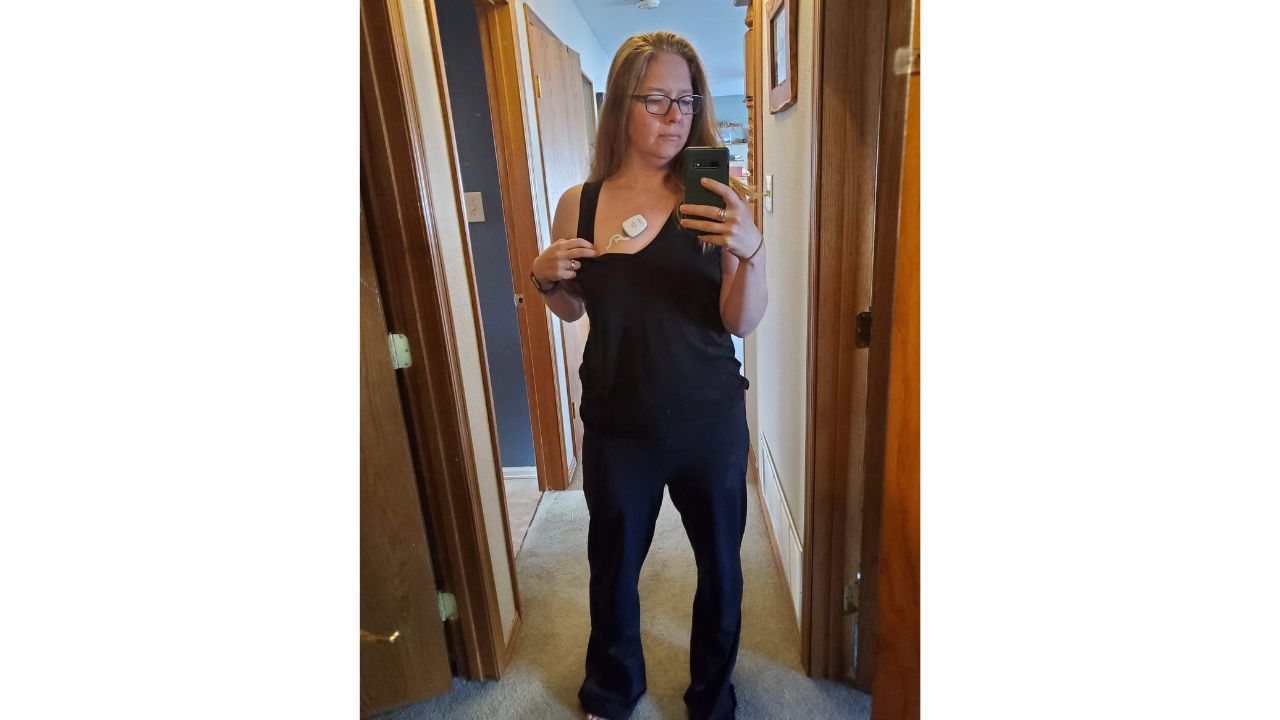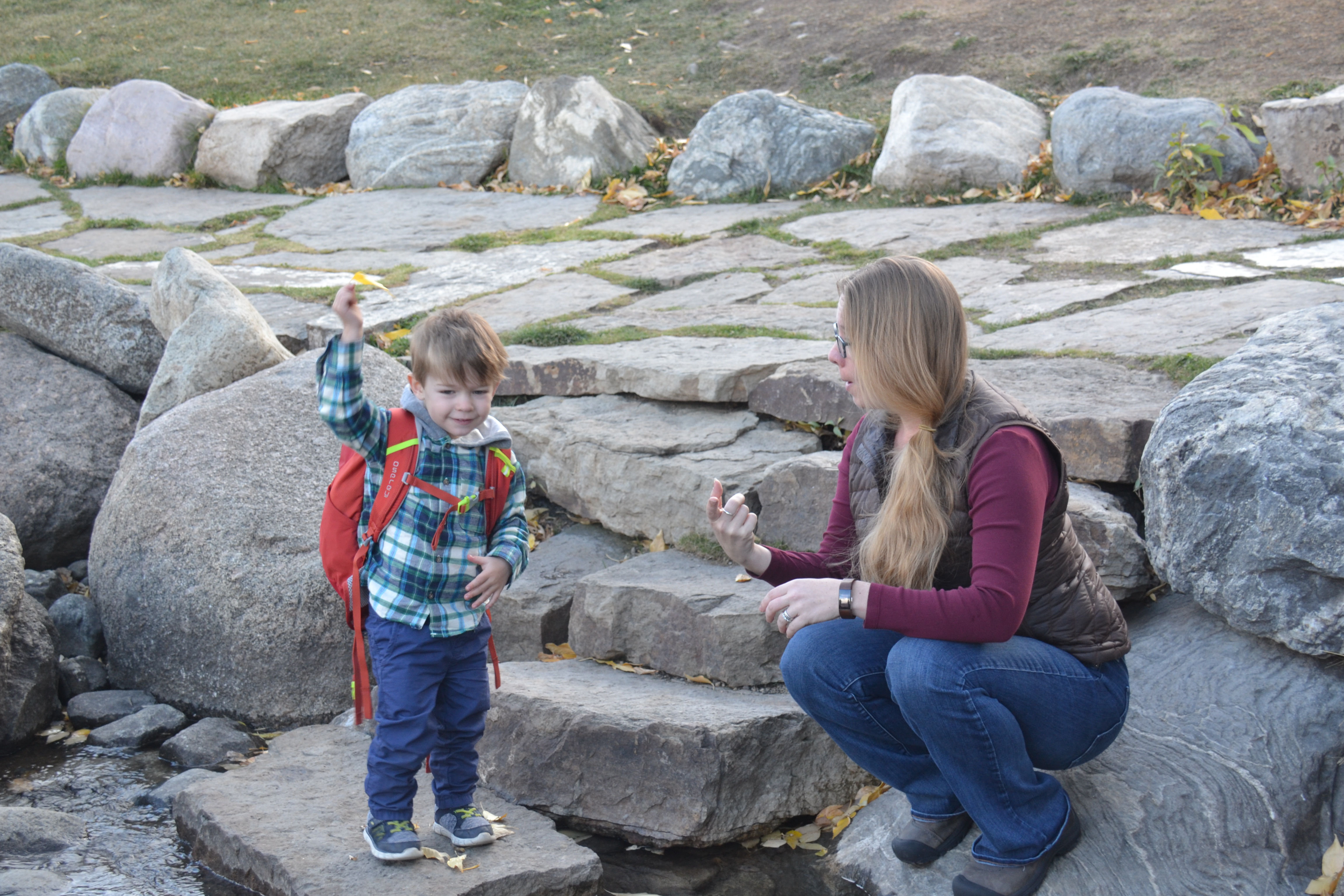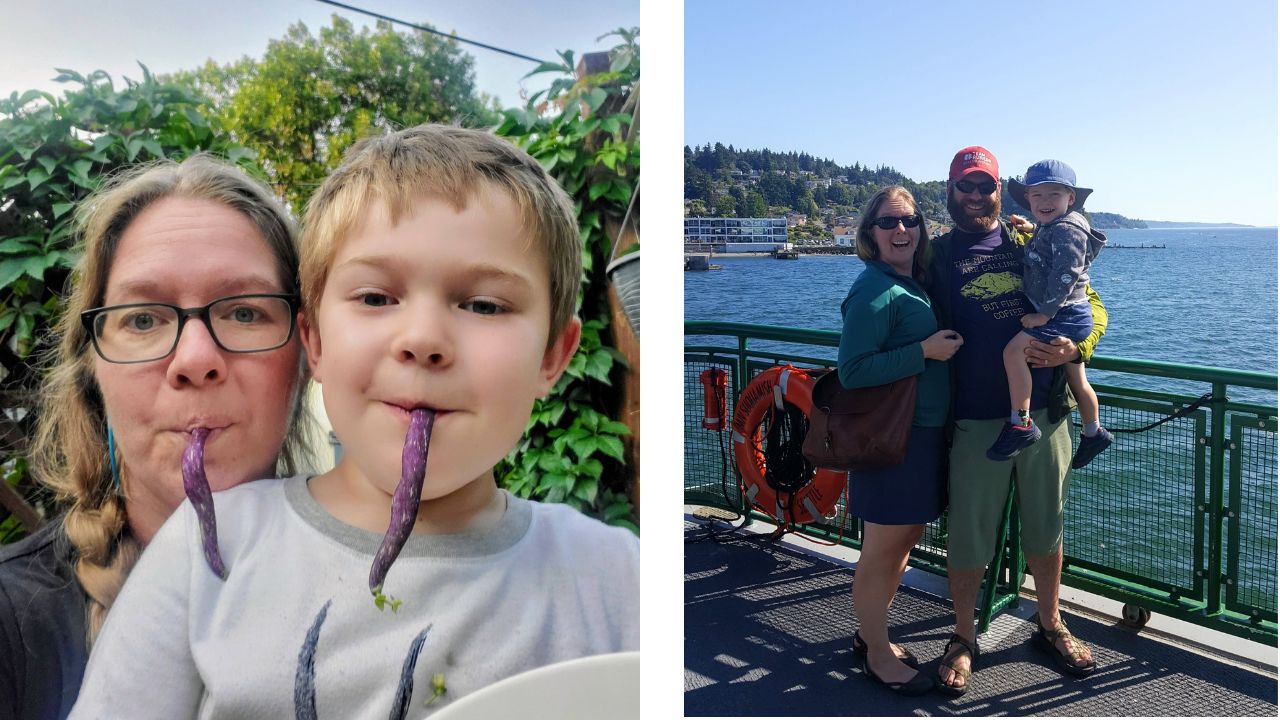Beyond the Visible: Adapting to Life & the Outdoors with Chronic Illness

Reclaiming an Active & Outdoor Lifestyle with Chronic Illness
This is a guest blog by Mind & Mountain friend & member Rachel Collins. Rachel is a skier, park ranger, & mom, and in the last few years has been learning how to navigate the challenges of chronic illness alongside her active life. Rachel leads our Spoonie & Invisible Illness Affinity Group inside of Ski Babes!
Read on for more of her story:

December 2022. I woke up with big plans today- big breakfast with the kiddo, Ski Babes workout, deep cleaning the house for guests, but as I crack my eyes open I realize none of those are going to happen today. I feel lethargic, nauseous, and despite my best intentions, my brain feels like molasses. I know this feeling now, my blood pressure is too low and my nervous system is on the fritz again. Is it the storm rolling in? Did I hit my salt targets yesterday? Did I eat something new? Maybe I overheated in my sleep again?
This is life with a chronic illness- while no one has a perfectly predictable day to day, a damaged nervous system means that every day I’m on the watch for triggers. A missed trigger, or a day where I make some mistakes managing my body means that I risk a cascade of nervous system failures that end in passing out. So today, I need to go slow. Squeeze on the compression tights. Have some salt. Ask my husband to start breakfast. And I’ll work on a blog post…
I used to be a morning person. Before I got sick, I was up early for a workout, breakfast with the baby, then out the door to start a busy day. Drop the little one at daycare and then a full day of managing some of the biggest and most controversial projects for the National Park Service from my office in Denver. Then home to make dinner for myself and my husband, packing lunches and bottles for the next day before some last emails. On the weekends we loaded up the little one in a trailer or backpack and headed out for trails in boots or on skis. I was a guide for 10 years, so I was determined to show the kiddo all the things I loved about big wild places.
Now mornings are the hardest. I sip saltwater before trying to sit up. My husband works on breakfast while I check in with my body to see how much energy I’m going to have for the day and make a plan. If I’m feeling like I have a lot of spoons (more on this in a bit), and my work calendar isn’t too chaotic, I’ll workout in the afternoons. Less spoons and 8 hours of meetings? Going to need to skip the workout. When the boys take off out the door for school drop off, I head to my home office to dig into work.

I’m a mom and the breadwinner for my family. I’m a park ranger. I’m a tele-skier. A baker and gardener. And I’m living with a chronic illness and a disability, but you can’t see it.
So, how did we get here?
I was on a work trip in March 2018 and started feeling bad while on the road. Getting sick while on work travel was pretty standard for me, but I was nauseous and dizzy too this time. I chalked it up to stress plus a cold and went home to sleep it off.
A month later, I still wasn’t feeling better, so I went to my doctor. The PA said it was probably just stress, plus a cold, and gave me an antibiotic. Two days later, I fainted sitting at my desk. When I called the PA back, again, it was stress, or a bad reaction to the meds and I was told to rest.
As we headed into May, now two months in, I was still dizzy, nauseous, and on the verge of fainting multiple times a week. Brain scan showed nothing, then off to the ENT to see if it was vestibular issues- nothing to diagnose- maybe you are anxious and stressed? Then to my obgyn- everything looks normal, maybe you are anxious and stressed? Then to cardio- your heart looks normal- maybe you are anxious and stressed? Onto a vascular specialist- your veins look normal- maybe you are anxious and stressed? Blood panel after blood panel showed no signs of illness, every number was normal.
This frustrating, dead-end experience is surprisingly normal for women with chronic illness. Our illnesses don’t fit into nice buckets, and we go to specialist after specialist, only to be told we’re “normal” and it’s “probably stress”.
So I spent the summer of 2018 trying to pull myself together by sheer will and effort. I worked full time, chased my toddler, got outside as much as I could manage, meditated, exercised when I could, and fed myself to the best of my abilities. But despite my best efforts, I was still nauseous, pale, tired, and losing weight. But the doctors said I wasn’t sick, so I believed there was “nothing wrong” with me.
 Like many others with this condition, I gaslit myself. In October, now 7 months after my symptoms began, I had to come home early from a work trip because I was too dizzy and nauseous to manage. I wasn’t getting better, I was getting worse by the week. My primary care doctor was also out of ideas and sent me to get a full body CT scan, which revealed that I had appendicitis.
Like many others with this condition, I gaslit myself. In October, now 7 months after my symptoms began, I had to come home early from a work trip because I was too dizzy and nauseous to manage. I wasn’t getting better, I was getting worse by the week. My primary care doctor was also out of ideas and sent me to get a full body CT scan, which revealed that I had appendicitis.
Appendicitis. 8 months of appendicitis brewing and shedding virus in my body. I had a rare case of chronic appendicitis that presented with zero pain, a normal white blood count, and a whole bunch of other unusual, nonspecific symptoms.
After I had surgery to remove my appendix, I expected a long recovery, so I settled in to pace myself through the recovery process.
The problem was, even with lots of time, I never fully recovered. In fact, the fainting spells were getting worse and more frequent. I was devastated. My energy was gone, I was shaky, I had cold sweats, and was exhausted after fewer runs than usual on the ski hill. I felt like I was failing my family- this wasn’t the life we were planning for ourselves and our son. Finally, after three years since the start of this journey, the breakthrough came in Feb 2021. I fainted in the pediatrician’s office during a visit for my son, and she saw the whole thing. My BP was 70/40. This wasn’t anxiety, or depression, or stress. A new cardio specialist saw the pattern right away: I had dysautonomia.
I know this is a long and complicated story, but it’s terrifyingly typical of how people in the chronic illness community get diagnosed. The average time for dysautonomia to be diagnosed is more than 4 years. And even then, many are misdiagnosed. We cannot start to manage, treat and heal until we know what the root causes are. If my story sounds familiar to you, if you or someone you know is struggling with symptoms that could be anything- please continue to ask questions, and ask your doctors about autonomic dysfunction disorders. They are surprisingly common.
What is Dysautonomia?
Dysautonomia is an umbrella of disorders, all that have to do with a dysregulated or damaged autonomic nervous system. You can learn more from the “What is dysautonomia?: Cleveland Clinic Fact Sheet;” and “Tell me more: What Is POTS? Dysautonomia Awareness Month 2018 - YouTube).”
- I had to learn a lot about the autonomic nervous system quickly, but these two pieces were especially helpful:
The virus I had did permanent damage to my nervous system. My cardiologist said to think about it like an amputation- I could learn to live with it and adapt around it, but it wasn’t going to “grow back”. That part of my nervous system wasn’t ever going to repair. - An autonomic system is like air traffic control for an airport. When it's working, everything goes fine, but when it goes haywire, it affects darn near everything in the body. I couldn’t assume that my heart rate, blood pressure, respiration rates, adrenaline responses and other connected systems were going to communicate with each other accurately.
The Emotional Roller Coaster
Finally having a diagnosis was a huge relief, but it was also a lot to process and adjust to.
The years between becoming sick and being diagnosed were so disorienting for my identity and my emotional landscape. We’re taught to trust doctors as authority figures, and when one after another tells you it’s stress and anxiety, you start to believe them. You start to distrust your own body and your own experience. That time damaged my intuition and self-trust, and it’s taking time to rebuild. Again, this is another common experience for those with undiagnosed, mysterious conditions.
After learning more about my diagnosis, I had to learn to sit with hard truths: the person I was, including my seemingly bottomless energy- it was gone. Huge components of my identity are built around being out in the wildness of the outdoors. I learned how to be both distinctly feminine and a strong leader on canoe portages in Wisconsin, I learned to listen to the land and head its winds in the fjords of Chile, I found new parts of myself over and over again on Alaskan summits, in southeastern river eddies, and in the pull of northern coastal tides. Twenty plus years, and a career, built on being able to work and travel frequently in the wildest places on the planet. But I was suddenly cut off from those possibilities- I wasn’t going to get better, my body wasn’t going to “heal”, I couldn’t trust my body anymore to respond and show up the way I needed it to.
Processing and accepting all of these changes has been a time of profound grieving. And my previous mentality of “all problems can be overcome with more effort” wasn’t going to serve me. I was going to need not only a new toolbox, but a new mentality – because chronic illness isn't something we necessarily overcome, it's something we manage. I was going to need to figure out how to manage. And I was going to need to find new goals and expectations.

Re-learning and Recovery
I’m coming up on 2 years of actively managing my dysautonomia and 5 years of being sick. The biggest thing I’ve learned, and am still learning is that my autonomic dysfunction doesn’t need to be the thing that defines my life, but it does need to be a thing. Ignoring that I have a condition that needs active and daily management will only result in more limits, not less.
Here are a few tips that have really helped me on my journey:
Energy is a finite resource, manage it wisely.
Remember the spoons I mentioned earlier? One of the first things I learned was about “spoons”. Some people in the chronic and invisible illness community use a metaphor about having a limited number of spoons that you can use each day. Others think about this as “matches” instead of “spoons”, which I like a bit better, as an outdoor person, I know once a match is gone, it's really gone. This theory came from Christine Miserandino, and the Washington Post has done a nice job of summarizing it here: Spoon theory: What it is and how it is used to manage chronic illness.
There is no going back.
Fretting over the plans I had, the things I wanted my body to do, the life I wanted to live, won't get me anywhere. There are things I need to let go of- solo trips probably aren’t safe for me anymore. Some days it's not a good idea for me to drive. I have to learn how to ask for help for things that used to be easy for me to do. I let myself grieve for these changes, yes, but I am learning to let them go.
I need to manage this everyday, and there are tools to help.
Right now, I am not using medications to manage my condition, and while every situation is different, it’s the best choice for me right now.. There are a lot of good resources out there for learning more about managing autonomic dysfunction such as @emilyrichOT; @the_teal_OT; Dysautonomia International: Dysautonomia Awareness, Dysautonomia Advocacy, Dysautonomia Advancement. Here are a couple specific tips:
- Compression and Volume This means compression socks or tights everyday, 6,000mg of sodium daily, 1 gallon of water. There is no skipping a day on salt targets or nutrition.
- Monitoring Energy. My Garmin watch has been a huge help in giving me feedback on my stress levels and how fast I’m losing energy. Using Garmin’s Body Battery feature has been huge in helping me gauge when I can push a bit (days I finish work feeling good and with 60 points of charge) and days I need to lean into recovery (days I wake up with 30 points).
- Tuning into Triggers. Triggers are everywhere and can crop up quickly, so keeping an eye on my environment and evaluating what may be more or less risky depending not just on the activity. For example, weather can affect my body, so if I see a low pressure storm rolling in, I don’t do riskier activities like driving or riding on the chairlift.
Movement is medicine.
While my healthcare team and I know that I may need medication at some point, we wanted to see if other lifestyle interventions could be enough to keep me stable enough to not need medication.
- Cardiac rehab. I’ll be honest, I fought this, but it helped. What I didn’t realize was that I didn’t need to re-train any single system. I knew how to get stronger, and how to increase my endurance, but I didn’t know how to re-train all those systems to work together when they were also adapting to a now faulty and fritzy autonomic system. The Levine Protocol has helped me get some of my stamina back.
- Hello Ski Babes! I was thrilled when my cardiologist said I should focus on lower body strength training to support strong and stable venus return and stable BP. Ski Babes training is a big part of me keeping my legs and core strong and supporting a more stable blood pressure.
- Progress Matters. Exercise is still hard, but I’m back to uphilling (slowly) in the resort. And I can keep up with my son, who is now 7, on skis and on the bike.

Advocate for yourself.
This is so so hard, but when the symptoms of an illness or injury aren’t obvious, it's harder to diagnose. It can be even harder to be heard by the medical community when someone is already of a marginalized identity. As a woman, I got asked so many times if I was pregnant, or because I’m a working mom my symptoms surely must have been attributed to stress. My husband was a huge advocate for me, because he was seen as an observer of my symptoms. I also tracked everything when I was sick (what made me feel better or worse, when I saw which doctors, etc), this way my tracking/data could speak for me when I couldn’t recall everything at once in a doctor’s office.
I’m still learning.
Chronic illnesses are vast and variable, and for many people, there are often multiple diagnoses in play, which makes management even more individualized. I’m just one example, of many folks, who are learning to live with chronic illness and reclaim an active outdoor lifestyle. As I’ve learned more about chronic illnesses, I’ve also learned that my story and how I’m managing isn’t that unique, but quite similar to the rest of folks with diagnoses like mine. Chronic illness can seem so isolating, but there’s such a rich community to connect with, learn from, and encourage each other through the hard parts.
- Rachel
About the Author:
Rachel is the mom of a curious 7 year old, wife to a disaster response coordinator, a former guide, and a lover of gardens, yeast doughs, moguls, canoes, and cool mornings. During the week she works as a project manager for the National Park Service, helping parks work towards creative solutions for crowding and congestion in parks, and when she steps away from her screens, she can often be found puttering around the garden or out on adventures, both big and small, with her boys.

